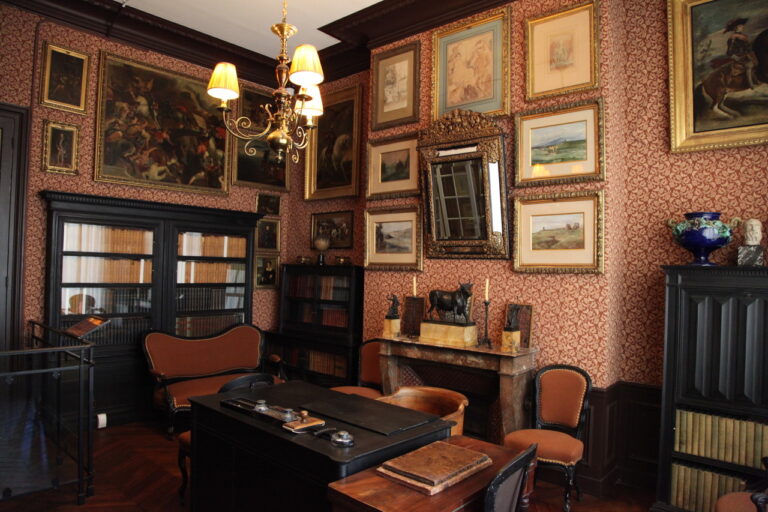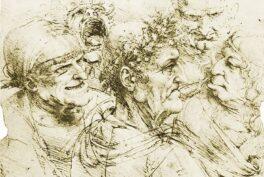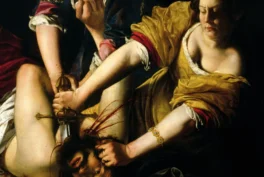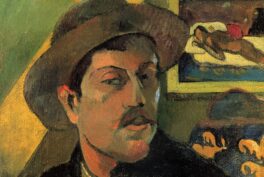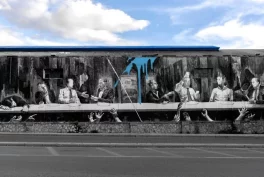We all know that feeling of travelling back in time when we encounter a trace of our past, whether by finding an object from our childhood, a book with that unique smell that we leafed through a thousand times, or the sound of an old parquet board which we used to avoid out of annoyance, only to find years later with nostalgia. But what about when art and artists get involved, when they decide to orchestrate their posterities inside their own homes? The answer can be found in Paris, at the Gustave Moreau Museum.
I welcome you to 14 Rue de La Rochefoucauld, once the abode of a man devoted to beauty and dreams. A residence where this artist, a master of Symbolism, settled in 1851. I have heard about this museum for a long time and it is more than time for me to see how the reality measures up to the myth.
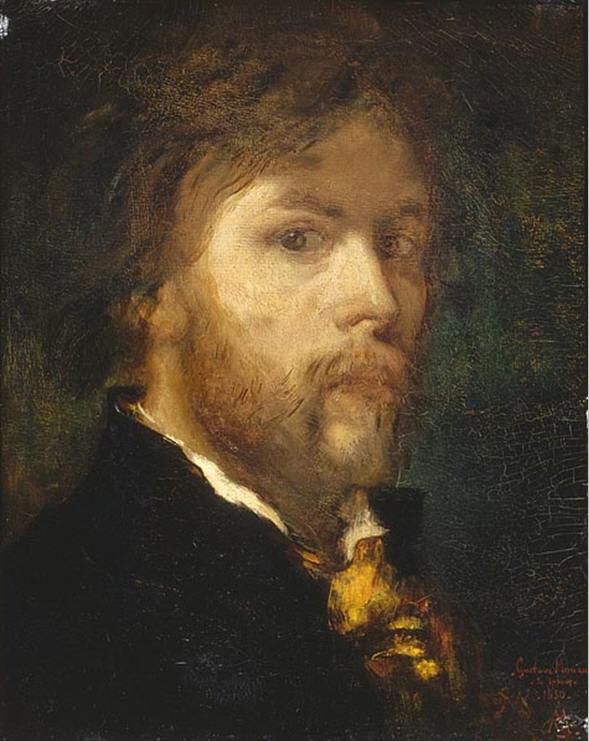
I have just crossed the threshold, and an initial feeling of comfort and familiarity puts a smile on my face. A man at the reception warmly greets me and wishes me welcome. I put down my bag and take out my camera and notebook. I have barely entered and I am already surrounded by a profusion of artworks, so I turn to this same man and, after a short exchange, I learn that this museum, which opened its doors for the first time in 1903, is the keeper of 25,000 works of art! No need to say more, I put on my headphones, play a composition by Abel Korzeniowski, and I’m on my way.
As the tour begins I see that what I was told is accurate: the time travel is immediate. We might wonder why this mansion has kept its late century decor, knowing that many artistic institutions are constantly trying to keep up with the 21th century. The explanation comes from Gustave Moreau himself. Two years before his passing on April 18, 1898, he decided to personally arrange each and every detail from the furniture to the decorations and works of art, like an alchemist creating his “great work”. He specified in his will that as much as this could be possible, he wanted nothing to ever be changed. The immersion is complete!
I reach the first floor, and step in his office where he received rare visits in the last years of his life. If you have the opportunity to visit this room at the end of the day, when the sun begins to set, you can see the show I have before my eyes. An autumn sunlight crosses the curtains of this modern cabinet of curiosity and creates an atmosphere so striking and timeless that I can almost feel Moreau passing by to sit at his desk, work on preparatory studies, and answer his correspondence or write in his journal.
“Tonight, December 24, 1862. I think of my death and the fate of my poor little works and all these compositions that I take the trouble to gather. Separated, they perish; taken together, they give a little idea of what I was as an artist and the environment in which I enjoyed dreaming.”
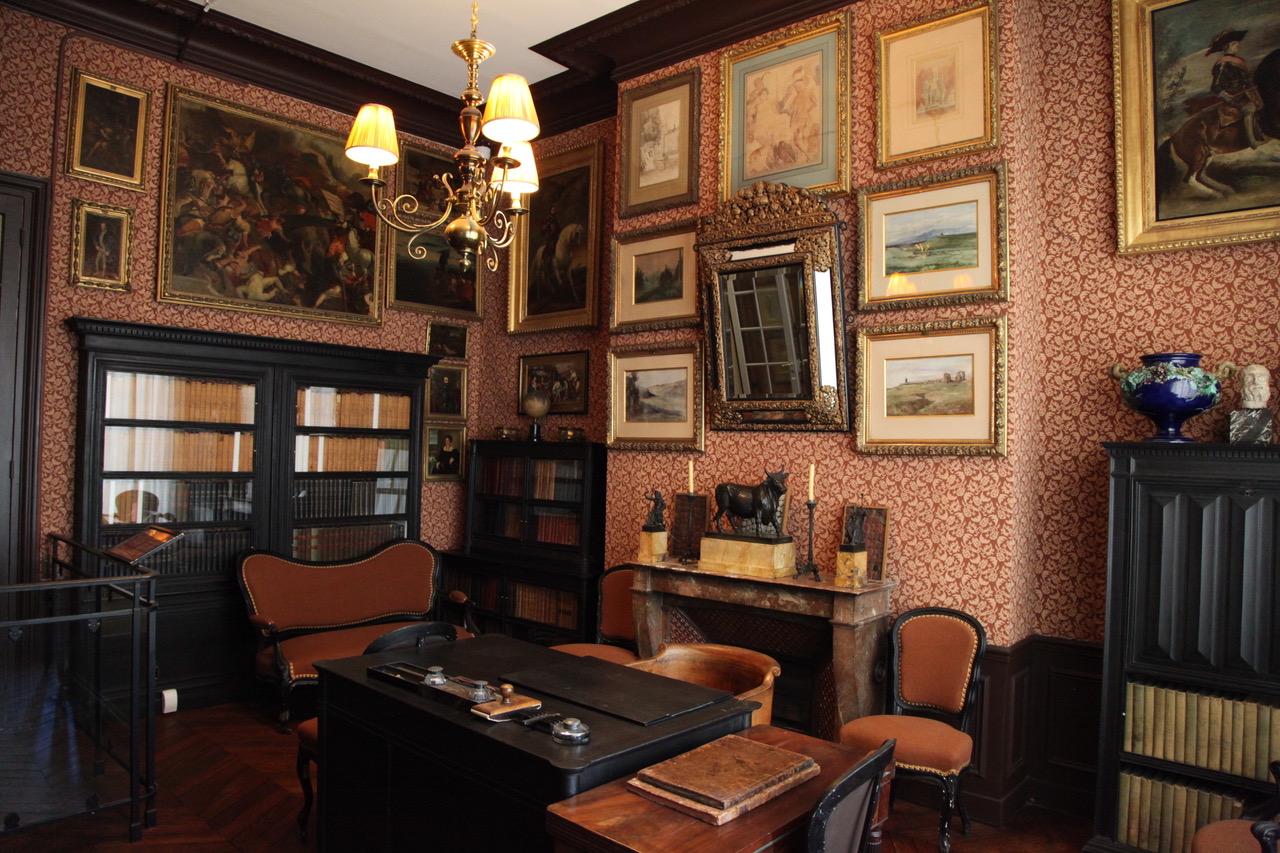
As I continue my visit to the upper floor, the surprise is total and breath taking. From the floor to the ceiling, hundreds of works surround me, reminding me of art salons of that era. Between monumental works and sketches, I am in the presence of the quintessence and obsession of a man for whom the staging and the experience of the visitor was essential.

On the walls, women and white marble ephebes intermingle here and there in an orgiastic chaos, through mystical and sometimes bloody compositions of history, religions and myths. It’s not worth trying to interpret everything or to unravel the mystery of his paintings, the research work was done upstream by Moreau, to offer us “only” the gift of contemplation in an enigmatic, sublime and Symbolist apotheosis.
“When this people can think and dream, they will be given the art that makes them think and dream. What is the point of this stupid struggle of the poet against this inertia and this savage love of that which forms the basis of the nature of this people of accountants?”
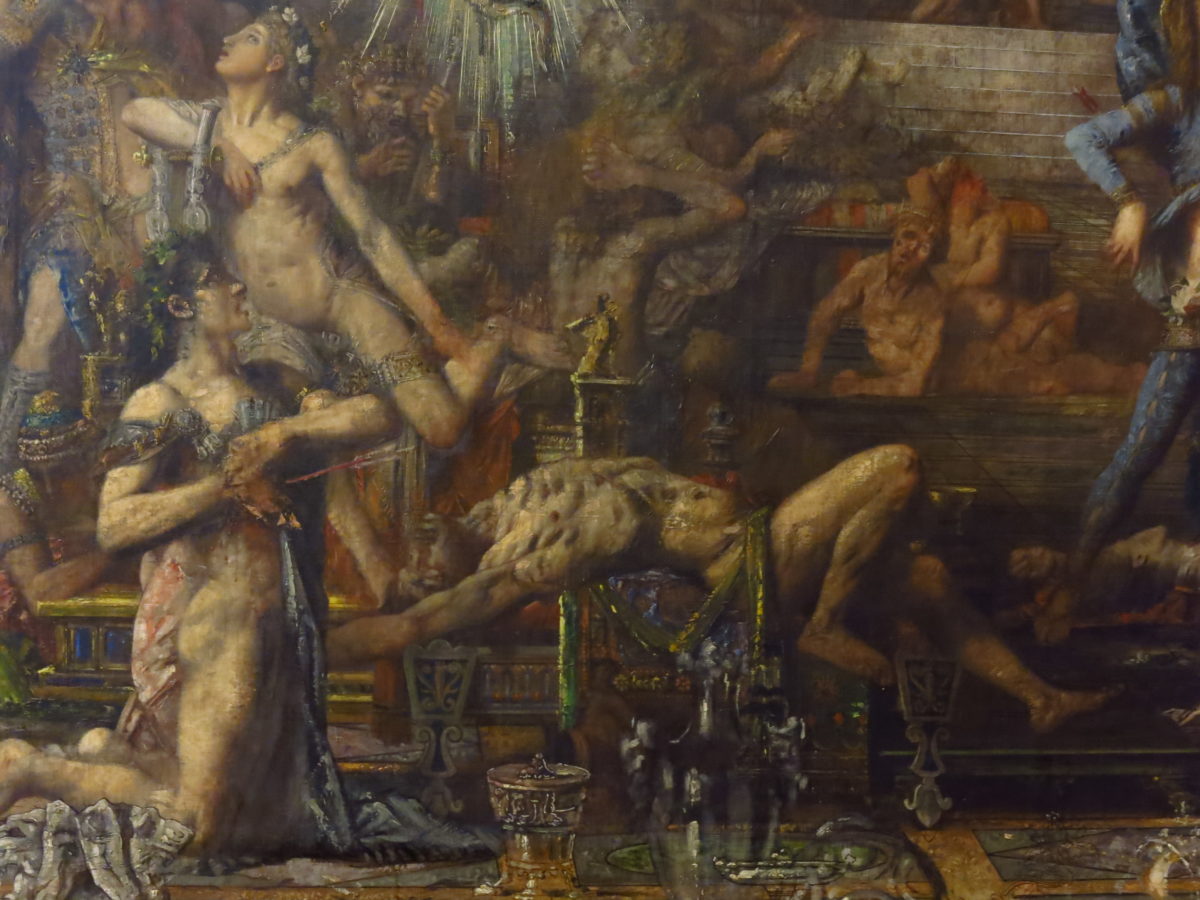
The visitors are silent, and my steps resonate on the floor until I reach a stunning spiral staircase designed by Albert Lafon (Moreau’s friend and comrade).
I ascend further and reach the third and final floor. Works and stories multiply and, crossing through the typical bay windows of an artists’ studios, a natural light is reflected on the canvases, adding realism and tangibility to this room, where countless paintings resonate in a Wagnerian atmosphere. The experience exceeds my expectations.
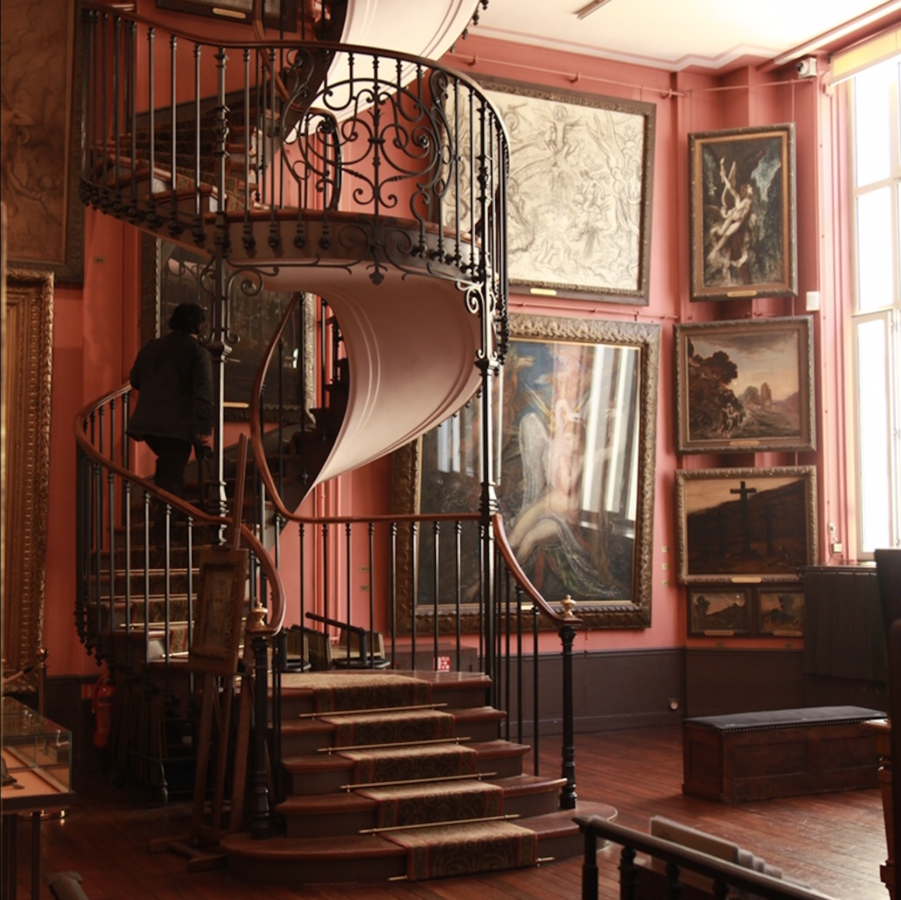
On my left, near the windows, other visitors are sitting in front of cupboards whose plans were designed by Moreau himself. Inside we can find no less than 5000 drawings and sketches at our disposal.
Gustave Moreau’s ambition was that his work would transport the observer into a dreamlike world, where rationality would no longer have its place, but where we could lose ourselves in our dreams and imaginary worlds, to find, in his own words, all the aspirations of dreams, tenderness, love, enthusiasm, and religious elevation towards the higher spheres, while being joyful with the imagination and distant flights to sacred, unknown and mysterious countries.
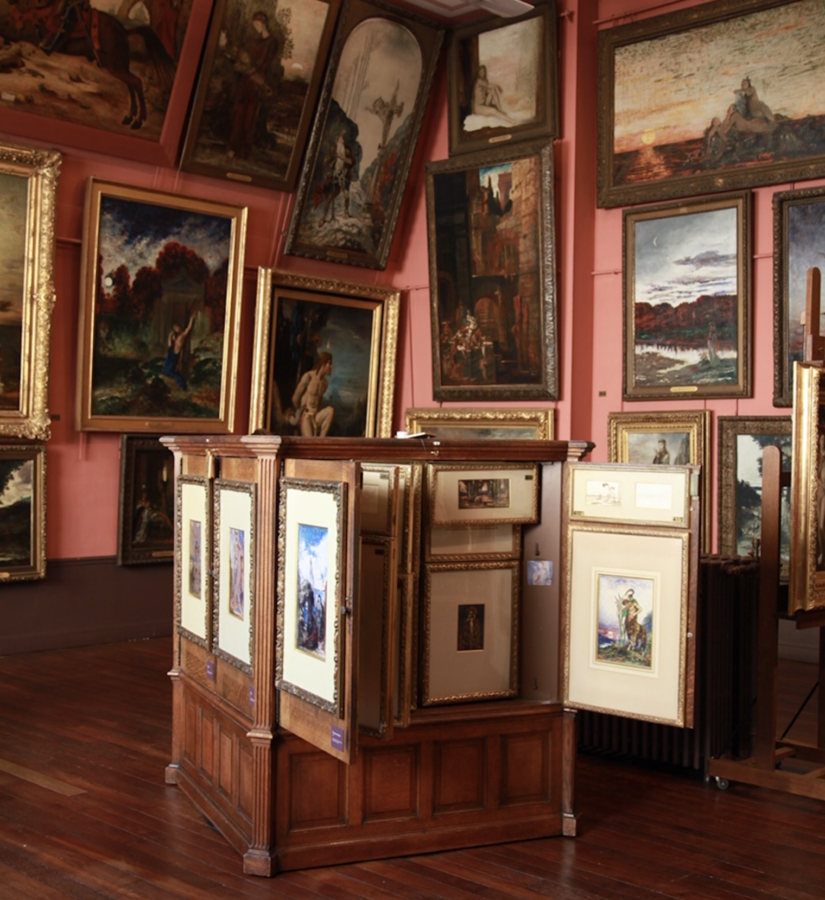

At this moment, it is no longer the time for writing, but rather for contemplation…
I have just left the museum and I experience a familiar feeling of being an anachronism when I return to the 21st century, as I walk up the street to have a coffee in Ary Scheffer’s garden at the Museum of Romantic Life. But that is another story.
In the meantime, I want to thank the team of the Gustave Moreau Museum for their hospitality and generosity.
Learn more:
[easyazon_image align=”none” height=”110″ identifier=”0300204337″ locale=”US” src=”https://www.dailyartmagazine.com/wp-content/uploads/2019/03/51yxPP24ErL.SL110.jpg” tag=”dailyartdaily-20″ width=”90″] [easyazon_image align=”none” height=”110″ identifier=”2711835405″ locale=”US” src=”https://www.dailyartmagazine.com/wp-content/uploads/2019/03/618HDZxILyL.SL110.jpg” tag=”dailyartdaily-20″ width=”83″] [easyazon_image align=”none” height=”110″ identifier=”2867701945″ locale=”US” src=”https://www.dailyartmagazine.com/wp-content/uploads/2019/03/51kQ4VumRdL.SL110.jpg” tag=”dailyartdaily-20″ width=”71″]
